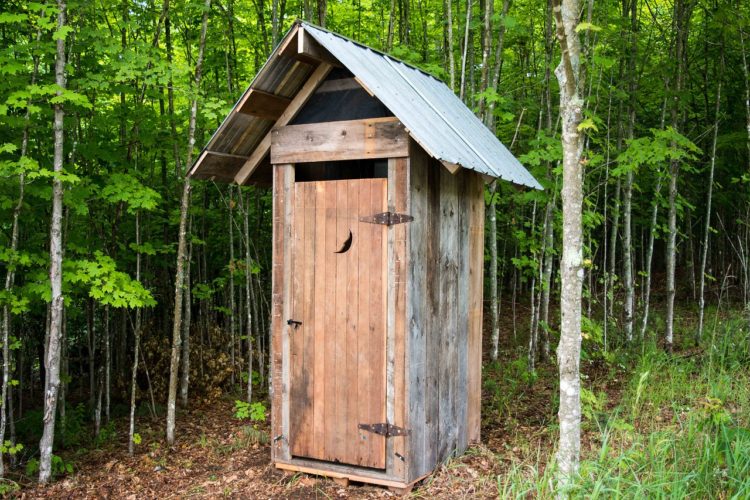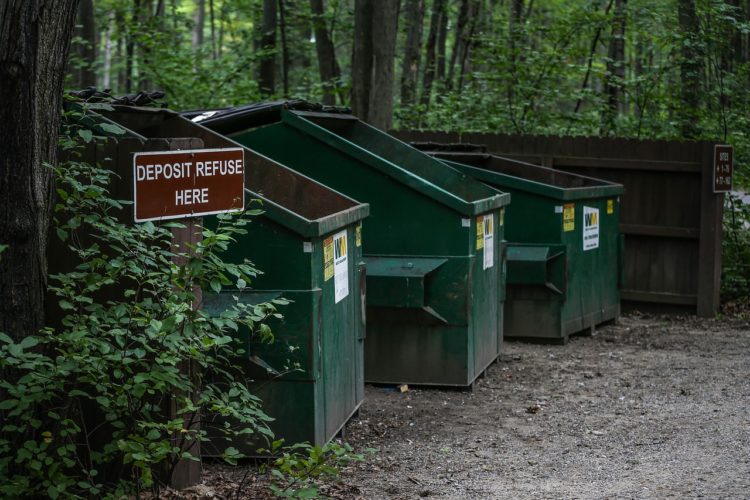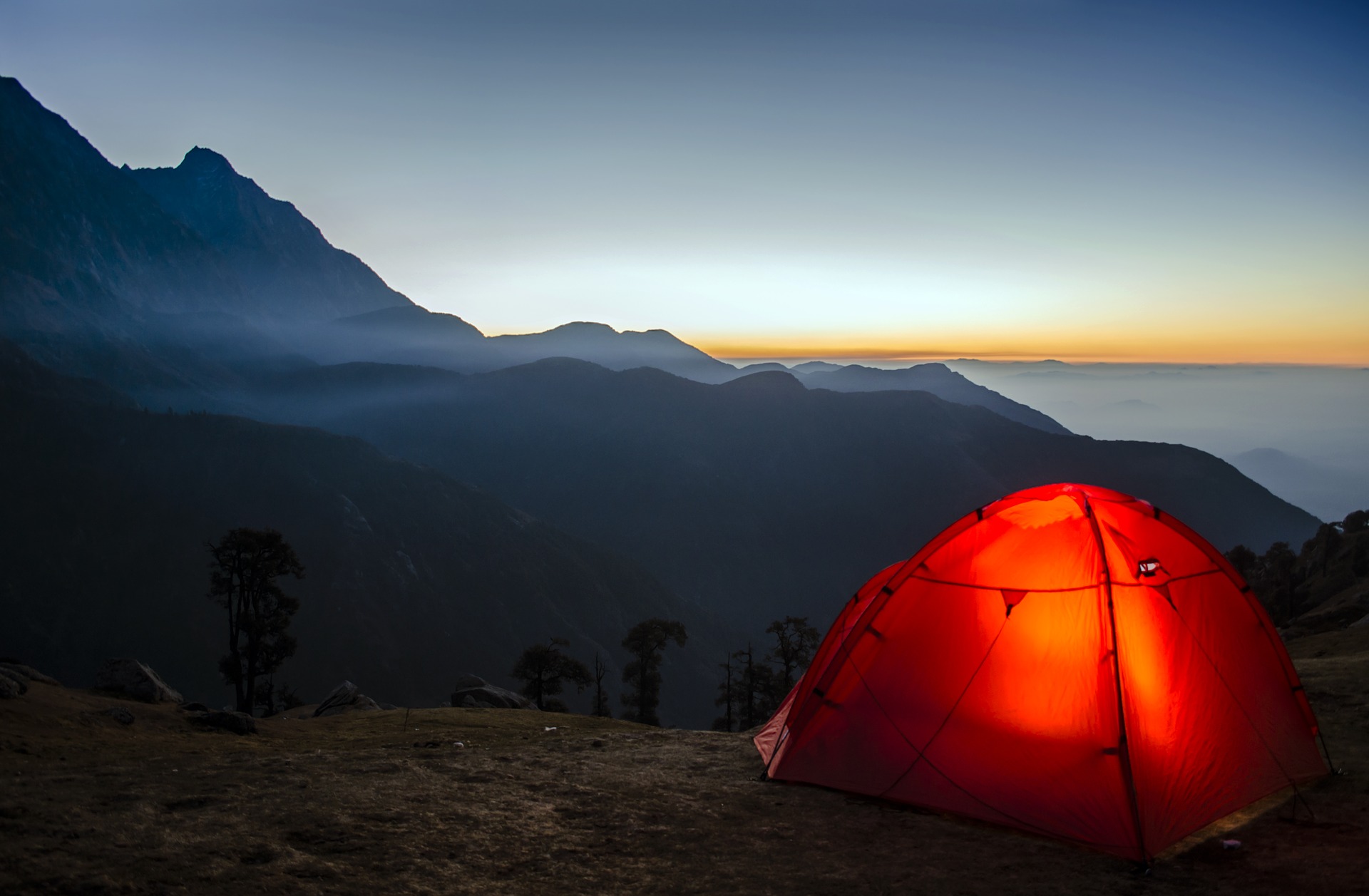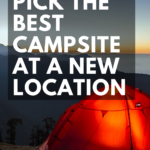Many of us have our favorite campgrounds, or are fortunate enough to have experienced friends we can lean on as guides to help us on the first stay at a new location. Striking out alone for greener pastures can be intimidating, especially with so many campgrounds only offering cartoonish maps of their facilities online.
Beyond just checking the ratings a campground may have on Google Maps or elsewhere, a little more research can help you to decide on which particular site you want to reserve at a new campground. When picking out a site at an unfamiliar campground, check out both the official campground map and satellite photos, watching for locations of key amenities, as well as a few things to steer clear of.
How much weight you place on each of these factors will need to be informed by your situation, as camping with kids is very different than camping without. Where proximity to the playground might be seen as detrimental by a group of late-sleeping college campers, it’s a huge benefit to a young family.
Table of Contents
Site-Specific Amenities:
Most campgrounds these days have a variety of site configurations, with different users in mind, charging different rates. Make sure you’re aware of what’s included in your site to help score a bargain rate, or make sure your stay is as comfortable as possible.
Utilities
I’m still very much a tent camper, as I’m happy to use the communal facilities, and to travel light and fast. I also don’t have the funds for a camper, nor a great place to store one. As such, I gravitate towards the cheap campsites, the ones with as few utilities as possible.
That being said, an electrical hookup can be a huge benefit in buggy areas, as small box fans can create enough wind to keep the mosquitoes down.
Typical utilities on offer for RV-oriented campgrounds include:
- Electrical
- Watch out for the amperage rating. 30 A and 50 A service are common, sometimes you’ll get a choice within a campground.
- Water
- Sewer
- This is the one that’s most-often left out on “partial hookup” sites.
Water and sewer hookups on your site can be extremely convenient, especially for long stays. But you’ll almost always find a clean-out site at the campground, so you can skip the sewer if you’re willing to use that instead.
Layout & Capacity
The ubiquitous American campsite includes a parking space or two, a picnic table, a fire ring (with metal grate for grilling), and a flat patch or two to pitch a tent.
That layout works great for a pair of couples meeting up for the weekend, but if you’re getting a larger crew together, it might not be ideal.
Campgrounds almost always limit the number of people that may stay at any given site, and many limit the number of cars as well. Make sure you grab a site big enough for the whole gang, or reserve adjoining sites for proper overflow.
Sometimes you can find atypical layouts, or larger sites designed for groups. These may come at a higher rate, but often sport extra features, such as pavilions or hammock hooks.
On that note, if you plan to hammock, make sure you get a site with trees or hammock hooks.
Ease of in/out of the campground overall
For those hauling long campers on crew-cab extended-bed pickups, turn radius and just how close the trees are to the road can present issues.
Unfortunately you can’t typically tell too much about those limitations from maps or satellite images, so you may have to pick up the phone and give the campground staff a call. They’ll be quite helpful, and very used to these kinds of questions. It does help to have a site number in mind before calling so as to ask specifics of that location.
Shade
Campgrounds vary immensely in their ecology, and this extends to trees. In the Upper Midwest, we have campgrounds with trees, and campgrounds in fields.
I much prefer camping in the shade of some solid trees, particularly those without large dead branches that I need be concerned will blow down in a windstorm.
Campground maps leave much to be desired in determining the shadiness of a given site, so make sure to check some satellite views on Google Maps before you reserve. Many of the satellite map services have their own photos, taken at different times of year, so if Google doesn’t give you a good view, try Bing or something else.
Distance to Key Amenities:

Moving beyond the site itself, there are many amenities that can influence the quality of your stay. I personally hate long treks to the bathroom in the morning, or carrying water an unnecessary distance, so I prioritize those considerations when booking.
Bathroom
A short walk to the bathroom, especially at night, can be a huge asset. Distance to the best bathroom in the campground is the first thing I check when reserving.
Varying Quality of Bathrooms
Not all campground bathrooms are created equal! Quality varies rather drastically from campground to campground, and can be totally different within the same campground as well.
In the Upper Midwest, our campgrounds typically have several pit toilets scattered around the park, as well as a much nicer bathhouse. For anyone who enjoys the availability of modern plumbing and coin-operated showers, landing near one of the nice bathrooms is a major consideration.
Water Source
Water is heavy, and carrying it long distances isn’t fun. Some places, the spigots for drinking water are located right next to the road, so you can easily drive your tank over and fill it up.
Other areas, the spigots aren’t so easily accessed from your car.
Know ahead of time what sort of trek you’ll have to fetch water, and plan ahead. One of those collapsible carts (make sure you grab a heavy-duty one like the Mac Sports Collapsible “Outdoor Utility Wagon” to hold the weight!) and a few large collapsible water cubes can make the trek easier, if you have to be a ways off from the water.
Firewood Sales
Campgrounds sell firewood like movie theaters sell popcorn and candy. Some places, you can get away without buying (see my article on How to Avoid Paying for Firewood at the Campground for more here), but that’s not always the case.
If you are planning to buy firewood on-site, make sure you know where it’s sold, and how to get it back to the campsite. That same heavy-duty collapsible cart can be a huge help if you’re trekking the wood through the car-free heart of a campground, otherwise plan on driving to the wood depot.
Avoid:

The majority of campers may want to steer clear of some of the following. Large groups and children can make loads of noise (this from a long-time camp counselor and adventure trip leader), so be aware what you’re getting in to when you pick your site.
Noisy:
Playgrounds
Playgrounds attract kids, and kids make noise. Not great for sleeping in late.
If you’re camping with kids, the playground can be a great thing to have nearby, or it can challenging to keep your kids off of when you need them at the site.
Group Sites
Group sites attract large groups, often of noisy, excited teenagers. I have many fond memories of all sorts of crazy, late-night campfire games and songs at such campsites.
We tried to keep our adventure teens respectful of quiet hours, but not every group is easily reined-in.
Smelly:
Trash Bins
Most of the time, these are located away from habitable campsites. However, if you spot the dumpsters right next to a campsite you’re eyeing up, you many want to reconsider.
RV Dump / Cleanout
Flushing out the black water tanks of an RV is a dirty process, and the holding tanks they’re flushed into are ripe with all sorts of smells.
Similarly to the trash bins, these tend to be a bit separated from the campground proper, but I certainly wouldn’t want a site right next to one.
Pit Toilets
Pit toilets get a bit of a bad rap, as they don’t have to be the horrible, smelly places they so often are. With a bit of proper sizing and design, they can actually be quite tolerable.
That being said, it’s easier to toss down a few more fire rings and picnic tables than to upgrade the size of a pit toilet, so they’re often left behind when a campground grows. The resulting stench is one better avoided.
Buggy:
Wooded, swampy areas are the absolute worst for mosquitoes. This can be hard to discern from a map, but satellite photos are often more revealing.
Try to avoid having to wear a mosquito net the whole trip, pick locations that are a ways away from stagnant water, or more exposed to the wind.
Pit toilets can also be breeding-grounds for a ferocious hoard of biting flies, so those are doubly good to avoid.
Relation to the Feature Attraction
At a beach-front campground, I want to be near enough the water to feel the sea breeze.
When there’s a great view to be had from a few campsites on the ridge overlooking the lake, that’s where I’d like to be.
Unfortunately, those sites often come at a premium. It’s up to you to spot the sites that might be worth the added money, or to grab one slightly cheaper that still has a great view.
Dealing with a Subpar Site
If you can’t get a good site at a campground, it might be worth checking around for other campgrounds in the immediate area. If you’re camping near a feature attraction, there are likely clusters of campgrounds nearby.
In the even that you think you picked a great site, only to show up to a nasty surprise, it’s worth asking the staff if you can swap.
Failing that, I always bring along a few supplies to help make the best of a bad site:
- Pack a hammock in case the ground is awful to sleep on.
- Bring bug control
- Fly strips
- Citronella or other site-wide repellents
- Lots and lots of wearable bug repellent.
- Bring your own shade
- A canopy or tarp strung up can help you deal with the heat
What Next?
If you need any other information on preparing to go camping, what to bring along, or where to go, check out my article Get Started Camping, which includes an interactive map with over 300 great camping locations across the US.


